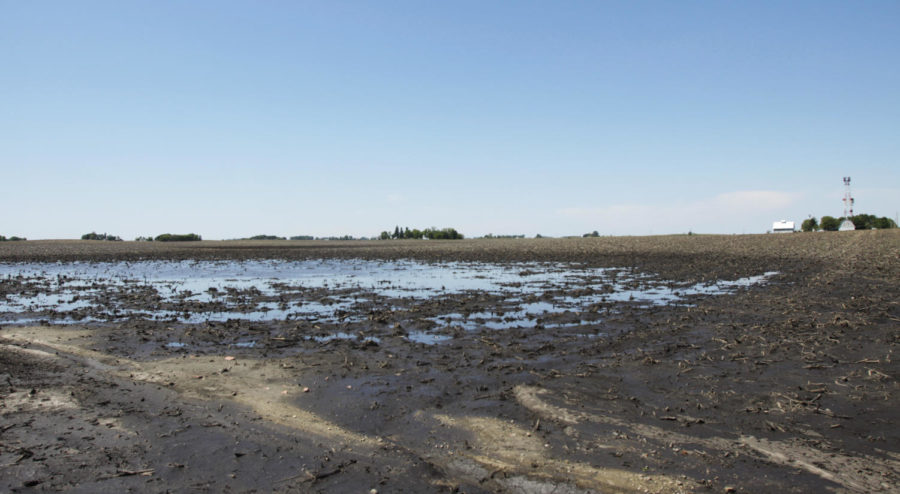Editorial: Flood help should be federally funded
Photo: Madeline Doyle/Iowa State Daily
Many farms saw flooding in the fields with the excessive rainfall this early spring. With high rainfalls, many farmers are being prevented from doing their jobs.
June 12, 2013
Though the typically rainy months of April and May have ended, the wet summer season is not yet over. Within the month of June, we can expect to welcome back gray skies and seemingly endless showers.
It would be nice to think the flood threats are waning, but that may not be the case. Unpredictable weather is one of Iowa’s trademarks, so we shouldn’t expect to see sunshine just because we so desperately want it.
The month of May brought flood scares all across the state. Luckily, Ames was hardly affected during this round. However, that hasn’t always been and certainly won’t always be the case.
Caution has been prevalent in Ames after the terrible floods a couple years ago. This summer, self-serve sandbag stations were set up in Ames to help residents deal with the scare of rising waters. This kind of forward thinking is what will keep the city afloat in future predicaments.
Ames certainly isn’t the only place in Iowa that has had to recover from bad floods. Back in 2008, Cedar Rapids bore the brunt of fierce floods across Iowa. The recovery process there was long and tiring, and marks of the 5-year-old injuries still remain in the downtown area.
With weather damage occurring practically every day in Iowa, the collective attitude has become a mixture of resignation and determination to rebuild. It’s the headstrong culture that many Midwesterners have that allows us as a group to keep rebuilding, keep living and keep trying to make things better.
Astounding effort from individual people as well as communities (such as Ames’ sandbag stations) goes into flood assistance and recovery each year. So, federal and state-level exertion should at least match, if not exceed, that of residents, right?
It definitely should, but sadly, it often doesn’t. Even as yearly weather damage racks up hefty price tags for the larger Iowan cities, officials still hesitate to enact legislature that will actually prevent the problems before they happen.
For example, Johnson County officials wished to change spillway policies (so as to prevent the repetition of billion-dollar damages like those seen in 2008). The study, priced at approximately $4.7 million and submitted annually since 2011, is apparently not worth President Obama’s or Congress’s time.
Preventative policies such as these, placed in key flood areas of the state, could save the state and city governments massive amounts of money each year. However, it seems that those in a position to make these things happen would rather keep their billfolds closed and hope floods don’t reoccur.
If you’ve ever been a resident of Iowa, you know they will.







